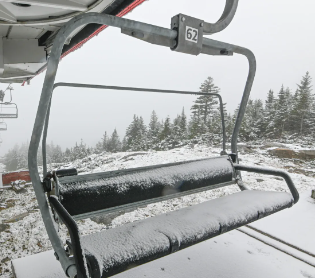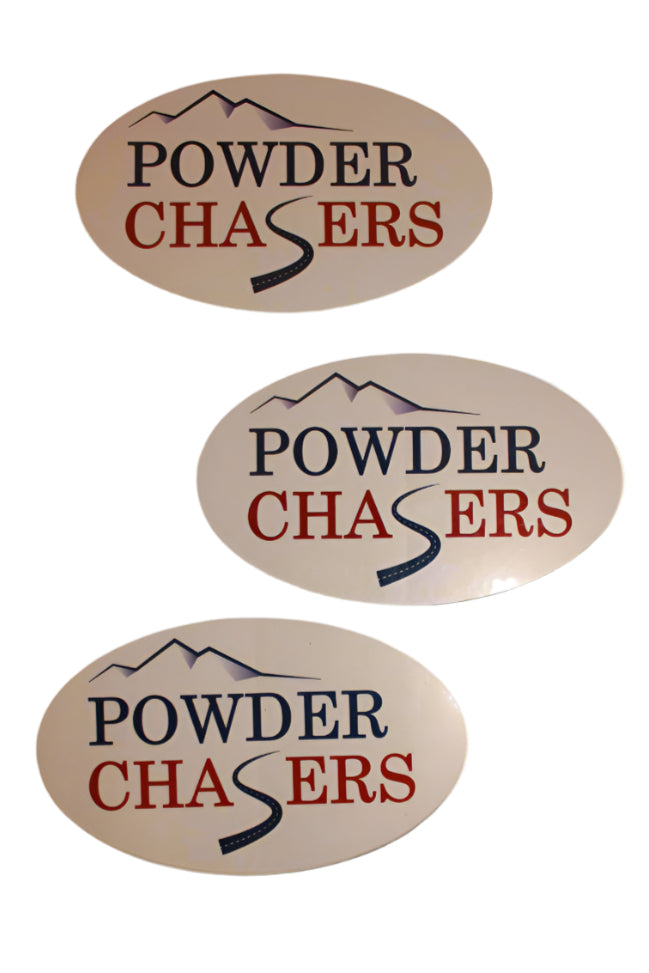Powderchaser Luke here filling in for Steve while he's out of town. After an extended period of painful ridging keeping the Western US dry, we finally have snow to forecast! We have a few storms to track this week that will spread snow across most of the Western US. In the long range, the pattern has been trending in a positive direction, with another possible storm next week. Looking even farther beyond that, there are some signs that the overall pattern could be conducive to additional storms. We are really excited to see the ridge finally break down and allow for the possibility of some storms. We really need several storms just to build the base at most resorts. As of now, there really aren't many options. We need a good series of storms to allow resorts to get the type of terrain open that we would chase for. This week's storm will definitely help the Southwest move closer to this goal. We have a solid looking snowfall forecast from the NAM below.

(image courtesy of Weatherbell)
Keys to the Chase
The action will begin tonight in the Northwest, as the first storm moves into the US. This first event is not huge, but will deliver some much needed snow to BC, Alberta, Washington, Montana and Idaho over the next three days. The biggest totals from the first storm will be in NW Montana, with less amounts elsewhere. Expect 4-8\" in the Northern Cascades in Washington, and 3-6\" in Central/Northern Idaho, interior BC, and Alberta as well. Northwest Montana will see higher totals, with 6-12\" in the Lewis, Sawtooth, Swan, Mission, Flathead, Livingston, Whitefish, and Lewis and Clark Ranges, with isolated amounts of a foot in the highest elevations.
The second storm, which will deliver some big totals to the Southwest, will get started tomorrow night. The Sierra will be targeted first, although with the NE and N winds snow on the western side of the Sierra will not be favored. Still, 3-8\" will fall in the mountains around South Lake Tahoe and on the East side of the lake, with the highest amounts on the East side at Mt. Rose, and snow levels around 7k. Similar amounts will fall on the eastern side of the Sierra as you head South. Once you get into the Southern Sierra snowfall amounts will increase dramatically, with 6-12\" possible in the higher elevations. Mammoth should do pretty well, with 4-8\" by the time the storm winds down. The summit should report even higher totals.
The snow will then move eastward into Nevada, Utah, and Arizona, where things really start to get interesting. Snow will start falling in Southern Utah late Tuesday night, becoming very heavy overnight and into Wednesday. Southern Utah is going to get crushed, with Eagle Point and Brian Head likely receiving 12-20\" of snow, with snow levels around 7k. Snow will be widespread in Utah during the next few days, and nearly all of the mountains in Utah will receive 6\"+ from this storm, with Southern Utah being the clear winner. The Cottonwoods have been trending better with this storm the last few days, and despite non ideal winds, Alta, Snowbird, Solitude, and Brighton should receive 4-8\". Lesser amounts will be found in Northern Utah.
Arizona is going to get hammered with snow, and we are happy to see it. Arizona Snowbowl is opening Friday and there will be A LOT of snow waiting for those heading out for opening day. The snow will start Wednesday morning and continue through Friday, with the heaviest snow likely falling Thursday morning, with !6500 foot snow levels. When the snow finally stops, expect 16-24\", with the summit possibly eclipsing 30\". Dejavu to forecasting huge storms last year for one of our favorite chases, Arizona Snowbowl. Don't forget Sunrise Park, near the New Mexico border, who could wind up with even more snow than the Snowbowl!
This storm continues to track eastward and continues to dump huge amounts of snow in SW Colorado. It's finally time for the nearly bare San Juans to get buried! The snow will start late Tuesday night and likely last through Friday. Highest elevations will likely see over 2 FEET of snow with this storm, while a general 6-12\" is expected above 7500 feet, with higher amounts as you go higher in elevation. A favorable SW flow will allow for significant snow totals in the San Juans. Silverton and Wolf Creek should do really well with this storm, where 12\"+ and 14-20\" respectively should fall by the time the storm winds down Friday. Purgatory will get in on the action too. Amen. Telluride will see some snowfall but with S/SW winds the totals will be less, likely in the 4-8\" range. Central Colorado will see significant snowfall too. Aspen, Crested Butte, and Monarch will likely see 6-12\" by the time the storm winds down, while the Northern Mountains should see 4-8\", including Vail, Beaver Creek, Breckenridge, Loveland, A-Basin, Copper, Keystone, and Winter Park. Initially snow levels will be high with this storm, so it's possible there could be some rain at the bases on Tuesday/Wednesday, but the air will cool down Wednesdsy night so Thursday and Friday will have lower snow levels. We have been waiting for snow for what seems like forever, so get out and enjoy this dump. We LOVE seeing the GFS snowfall forecast look like this!

(image courtesy of Weatherbell)
Lastly, the storm will deliver snowfall to parts of New Mexico as well. Although not as impressive as Colorado, expect a general 4-10\" for Taos, Pajarito, Ski Sante Fe, Red RIver, Angel Fire, and Sipapu. All these areas are in need of snow and this will certainly help. The resort outside of Las Vegas, Lee Canyon, is going to get hammered with snow as well. We wouldn't be surprised if the upper elevations received more than 2 FEET!!
Long Range
The models have been trending toward a more favorable setup next week and moving into the end of the Month. Below, you can see the GFS ensemble showing a trough (possible storminess) in the West. Not bad.

(image courtesy of Tropical Tidbits)
Looking further out, there's at least one signal that the west could remain stormy. This should probably be in the Weathernerds section but below is a forecast for the Pacific North American Oscillation (PNA) teleconnection. All you need to know is that the PNA can be positive, negative, or neutral. When it's negative, there is likely a trough in the west which equates to storminess. In the image below, the green line is the mean, and the one we want to pay attention to. As you can see, the green line remains negative for the foreseeable future at least into mid December.

Let's hope this forecast remains and the storms continue through mid December at least!
Details for the Weathernerds
We are a little short on time with this forecast so the weathernerd section will be brief. But we didn't want to leave you totally empty handed. This is an interesting and somewhat unique setup, so let's take a look at how it will develop. First we have the aforementioned storm that will affect the NW, which is actually just a nice little short wave trough seen below.

(image courtesy of Weatherbell)
You can see the trough moving through the NW. What happens next is pretty cool, as a closed upper level low that has been sitting off California will begin to move inland, drawing in subtropical moisture, and then merge with the trough that moved through the NW. Watch the merger in the GIF below.

(image courtesy of Weatherbell)
You can see the subtropical moisture being drawn in by the upper level low, that will provide the moisture for the big snow totals in the Southwest.

(image courtesy of cw3e)
Lastly, we will show you a 700mb vorticity/wind map, as this map is great for seeing what kind of lift will be present during the storms. It shows how much synoptic scale lift as well as the winds at ~10k, which are best for determining orographic lift. You can see plenty of synoptic scale lift through the Western US during this time, especially


























